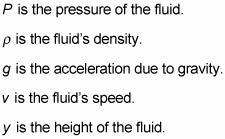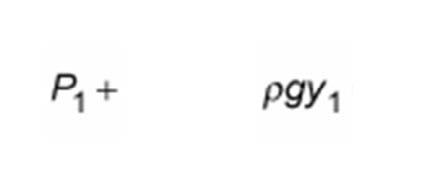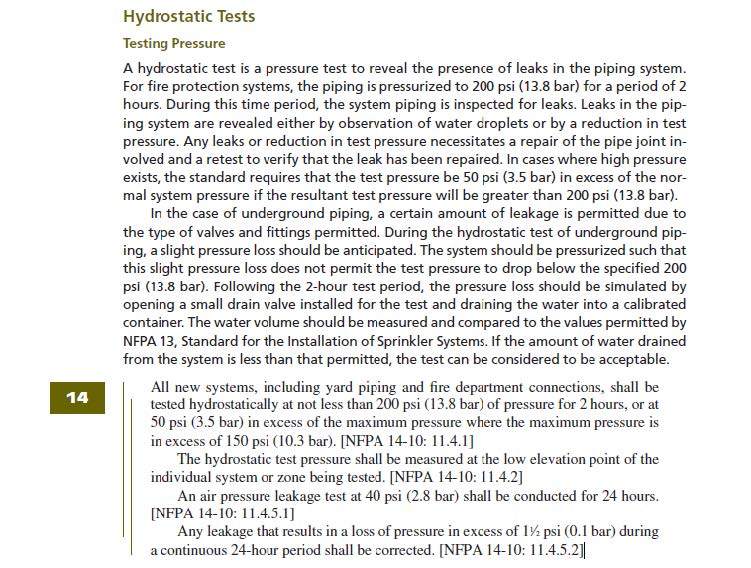If ever there was a place where you would not use Bernoulli's Equation this is certainly it.
No velocities here, so dynamic pressure (1/2*ρ*v
2) would be zero, but the equation that bimr showed would then be quite wrong since the total pressure at the top would not ever equal the total pressure at the bottom. The nomenclature is quite lame as well since P
1 and P
2 are actually "Static Pressure" (a component of total pressure) not "Pressure on the fluid" (which implies total pressure).
Pascal's law (a manifestation of Archimedes' Principle) says that an applied force is transmitted throughout the fluid, not that the applied force is the only force acting on the fluid. The proper fluid statics equation is:
P= ρgh+P
applied (with the reference plane for "h" usually taken at the surface of the fluid and positive is down)
For your hydrostatic testing question, the test pressure applies to each section of the vessel and piping under test. If I'm doing a 900 psig pipeline test on a pipe that drops over a 1,000 ft cliff (and I've done that), then I know that with a water test the pressure at the bottom of the hill is going to be 433 psig higher than the pressure at the top of the hill. When I apply 467 psig to the top of the hill, the welds and piping at the bottom are under test pressure and can be considered tested if they don't fail during the test duration. The piping and welds at the top of the hill are at about half of test pressure. If I raise the applied pressure at the top of the hill to 900 psig, then I've tested the whole system, but the piping on the bottom of the hill has been subjected to 1333 psig and I have to start being concerned about yield and work hardening.
In your exact case you have to ask "how tall is tall?". Every meter of height is almost 0.1 bar. A 10 m vessel would have 14 barg at the top and 15 barg at the bottom. If the MAWP of the vessel is 100 barg (ASME B16.5 Class 600), then this is exactly the way to do your 14 barg leak test. If the MAWP of the vessel is 20 bar (Class 150) then you'd still do it this way. If the MAWP were 8 barg, then I'd probably split the difference and do the test with an applied pressure of 13.5 barg.
David Simpson, PE
MuleShoe Engineering
In questions of science, the authority of a thousand is not worth the humble reasoning of a single individual. Galileo Galilei, Italian Physicist






